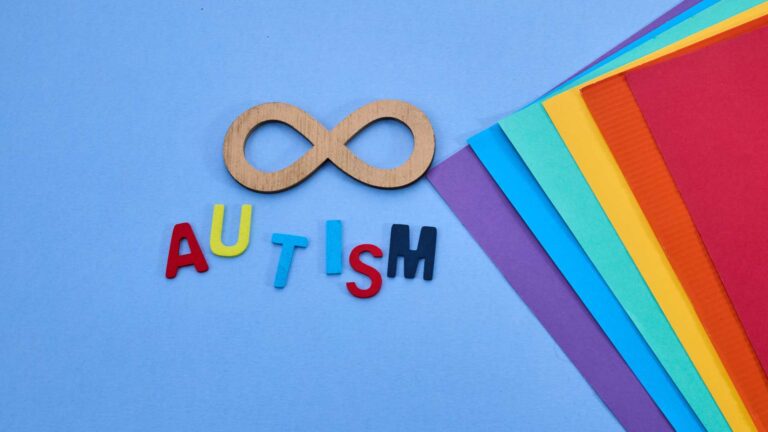Food obsessions and picky eating are common behaviors in children, and kiddos with Autism Spectrum Disorder (ASD) are no exception. People with ASD often struggle with adapting to new stimuli and strongly cling to their preferences and patterns, which often links autism and fussy eating.
Although eating can be an enjoyable activity for most people, for those on the spectrum, it can often cause discomfort. Picky eating is a typical behavior among people with autism. The study “Changes in Food Selectivity in Children with Autism Spectrum Disorder,” published by the National Center for Biotechnology Information (NCBI), reveals that between 46% and 89% of children diagnosed with ASD face difficulties related to eating. These difficulties can range from selectivity in food choices to adopting unconventional eating patterns and rituals.
At ABA Centers of Tennessee, we understand that autism and fussy eating can create anxiety and increase the stress burden for parents and caregivers of children on the spectrum. In addition to parents’ concerns about ensuring adequate and nutritious food for their children, selective eating habits can complicate participation in family gatherings, restaurant dinners, celebrations, and visits. In this guide, we want to provide you with seven effective autism-picky eating strategies for introducing new foods to your child in a friendly and successful manner.
Addressing Autism and Fussy Eating
Many parents have concerns about autism and fussy eating because, if not adequately addressed, it may lead to potential nutritional consequences, as stated by research shared by the NCBI. Selective eating in individuals on the autism spectrum can lead to obesity or malnutrition, so addressing this concern remains essential to ensure children’s well-being, health, and overall development.
Introducing new foods into the diet of a child with ASD may present additional challenges due to the disorder’s characteristics, such as solid adherence to specific interests and sensitivity to new textures, smells, and tastes. However, it is essential to note that selectivity in feeding may decrease with time and practice.
As children explore and discover new foods they enjoy, they can gradually expand their food repertoire and embrace a more nutritious diet. Therefore, addressing the relationship between autism and fussy eating on time is crucial. The main goal is to ensure that your child develops a healthy relationship with food, receives all the nutrients necessary for proper development, and mealtime becomes an enjoyable experience for all family members.
Autism Picky Eating Strategies
Rule Out Any Health Problems
We should not assume that food-related issues are solely due to children’s preferences. It is crucial to first rule out potential health problems, such as intolerances, allergies, dental discomfort, stomach disorders, or acid reflux. Children often struggle to express health issues verbally, and this challenge may be even more pronounced for children with ASD.
Therefore, we strongly recommend you consult a pediatrician and undergo medical examinations to ensure everything is functioning correctly and to rule out any physiological issues related to food selectivity.
Keep a Record of Your Child’s Food Preferences
Compiling a list of the foods your child enjoys and those they reject is essential to initiate changes in your child’s diet. To maintain this record, choose two days during the week and one weekend day, and document all the foods and beverages your child samples, accepts, and declines. With time, this list will be a valuable reference tool to expand their food choices and monitor their progress.
Introduce New Foods Gradually
It is crucial to remember that, in the case of autism and fussy eating, it is all about an adaptive process. When introducing new foods to your child, begin with small portions. Consistency and patience are essential in this process.
Your child may not immediately accept the food on the first attempt, but it is important to keep offering it on their plate during mealtimes. For instance, place a few slices on their plate rather than serving a whole apple. If your child decides to ignore them, do not be discouraged; continue to expose them to this food consistently. Additionally, you can try cutting foods into fun shapes to motivate your child to try them.
Avoid Pressure
As mentioned earlier, enriching your child’s diet with various foods is a gradual process that demands consistency and patience. It is crucial to approach this process as relaxed and enjoyable to prevent your child from associating mealtime with discomfort. Here are some guidelines to reduce expectations and anxiety in a child with picky eating tendencies:
- Give your child time to explore food without pressure or expectations.
- Let your kids play with their food and select items that pique their interest.
- Be a role model. Children often mimic their parents’ actions. Take a bite of the same food you want your child to try, demonstrate your enjoyment without exaggeration, or even make light-hearted comments or jokes about the food to encourage them to try it.
Making mealtimes an enjoyable experience is crucial to alleviate anxiety and challenges associated with autism and fussy eating. You can incorporate playful and entertaining activities just before meals to help your child with neurodivergence relax. When individuals are in a good mood, they are more likely to be receptive to new experiences.
Combine Accepted Foods with New Flavors
Combining foods can enhance their flavors and make them more appealing. Imagine boiled broccoli versus cooked in a pan with butter and garlic, then blended into a rich, cheesy soup. Which one sounds more appetizing to you? The same principle applies to neurodivergent children. Although they may appear to have limited food preferences, combining foods they enjoy with new ingredients is an effective way to familiarize your child with new items on their plate alongside those they already like and encourage them to try.
You can also check out recipe ideas for picky eaters, like these ideas by Bonappetit. Here are some simple but tasty ideas for incorporating new foods into your child’s diet:
- Carrots: Consider introducing carrot pieces in creamy soups if your child enjoys light-textured foods. An excellent option is to prepare a creamy chicken and vegetable soup and add some carrots, increasing its nutritional value and enhancing its flavor.
- Tomatoes and Mushrooms: Pasta is a staple and can serve as a gateway to more diverse foods. Begin with noodles and butter, then gradually introduce tomatoes or mushrooms to expand the range of flavors.
- Meatballs: Children often prefer soft, blended textures. Once again, pasta can be an excellent vehicle for introducing meatballs. Prepare a pasta dish, add meatballs in small pieces, and then cover them with marinara sauce. Over time, you can incorporate more vegetables into the recipe to enhance its nutritional value.
Prepare New Foods in a Manner They Already Enjoy
Many children with autism and fussy eating often prefer fried foods. In this case, an effective strategy is to prepare new foods in the same way as the foods they already like. The air fryer and the frying pan become valuable allies in this process.
One way to introduce healthier options is through sauces. You can prepare the fried foods your child enjoys and add a vegetable-based dip or sauce. Additionally, you can offer crunchy vegetable alternatives, such as breaded cauliflower, carrots, onions, and peppers, to introduce variety and nutrients to their diet.
Involve Your Child in Cooking
You can foster your child’s skills with love, understanding, and perseverance. Who knows, perhaps your child has exceptional cooking abilities. The only way to discover this is by giving it a try. If your child with autism and fussy eating shows an interest in cooking, consider involving them in preparing a simple meal.
Teaching them to chop, set the oven temperature, handle pans, and mix ingredients can be an enriching experience. Involvement in food preparation may motivate them to be more willing to try new flavors and foods.
How Can ABA Centers of Tennessee Help Children with Autism and Fussy Eating?
At ABA Centers of Tennessee, we offer ABA therapy services that can help your child with ASD reduce challenging behaviors and develop life skills that foster adjustment to the environment. This therapy also provides children with autism with tools to cope with problematic behaviors and parents with strategies to address difficulties associated with ASD. If you want more information about ABA therapy, please call us at (844) 423 9483 or complete the form on our website to schedule a free consultation.






